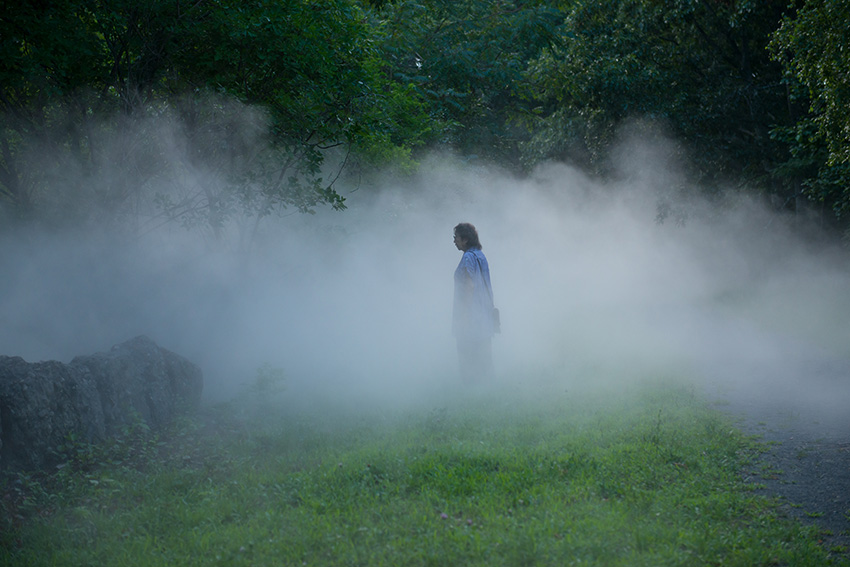Text by CLOT Magazine

Haus der Kunst, the renowned museum and centre for contemporary art in Munich, presents the first comprehensive survey exhibition outside of Japan of the ground-breaking Japanese artist Fujiko Nakaya. Opening on April 8, the show aims to portray how Nakaya’s paintings and drawings prove a transformed way of seeing, informed by observation, which the artist describes as the underlying principle of both art and science.
Nakaya’s fog sculptures defy traditional conventions of sculpture by generating temporary, borderless sites that physically interact with the public. The ephemeral sculptures envelop audiences in a disorientating, transcendent connection with their environment. Fog makes visible things become invisible and invisible things—like wind—become visible, Fujiko Nakaya states. Driven by early ecological concerns, Nakaya’s work deals with pure water and air, mediums that have particular resonance in the face of the climate crisis.
Gaining prominence in the 1970s as a member of Experiments in Arts and Technology (E.A.T.), creating over 90 installations and performances worldwide. Nakaya consistently collaborated with artists from a variety of disciplines, including architecture, music, dance, and light, to express the polymorphic nature of fog.
From her rarely seen early paintings to her fog sculptures, including two new site-specific sculptures created especially for Haus der Kunst, along with single-channel videos, installations, and documentation that reveal Nakaya’s cultural and social references, this experiential exhibition will offer an in-depth survey of one of Japan’s foremost artists.
The detailed observation of natural phenomena and seemingly small, everyday gestures plays a central role in Nakaya’s oeuvre. Her videos often feature real-time recording and resemble experiments that challenge the patterns of perception. Nakaya used video as a means of subjective analytical documentation and direct communication.
In addition to her video sculptures and installations, the artist engaged in so-called “communication projects” in which she interviewed and documented local communities. In 1980, she co-founded the artist collective Video Hiroba and opened SCAN, the first gallery for video in Japan.
Akin to abstract landscapes, Nakaya’s artworks trace the artist’s interest in cyclical processes of decay and renewal. The painted clouds and biomorphic forms constitute an essential link to Nakaya’s moving image practice and her fog sculptures. Blurring the borders of science, art, and technology, Fujiko Nakaya’s work invites us to rethink, by direct physical experience, human entanglement with the environment.
Nakaya’s work will also be placed in direct relation to her social and cultural network. The coinciding exhibitions of the Japanese art collective Dumb Type, the German artist and musician Carsten Nicolai and legendary visual artist Joan Jonas. A screening programme will accompany the exhibition on Ivanami films conceived in collaboration with the Harvard Film Archive and a symposium on July 30, including a new work by artist Jenna Sutela.






